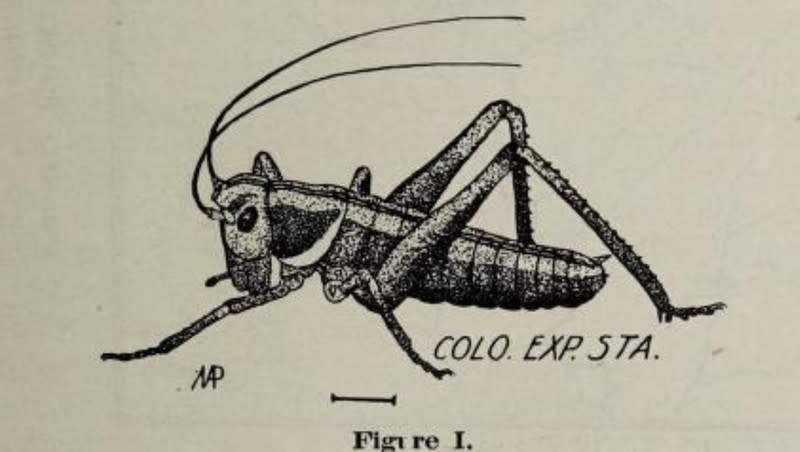Mormon crickets scurry across Nevada streets. Here’s a look back at the cricket war of 1848

Elko, Nevada is a small town along the route of the California Trail. It’s home to around 20,000 residents and is now experiencing an influx of crickets.
In Nevada, tens of thousands of Mormon crickets began to hatch in late May and since then, they’ve traversed onto the roads in large swatches, The Associated Press reported. Elko has been particularly impacted.
This year, the crickets hatched later than usual and Nevada resident Dana Dolan has said to The Associated Press, “it’s almost like a biblical plague.” When crickets are scurrying around together in packs, “it sounds like rain” and they end up everywhere from the bottom of shoes to inside gyms.
Related
Live crickets are beetling across roads and even climbing on hospital walls. “Just to get patients into the hospital we had people out there with leaf blowers, with brooms, at one point we even had a tractor with a snowplow on it just to push the piles of crickets and move them on their way,” Steve Burrows, director of community relations at Northeastern Nevada Regional Hospital, told KSL TV.
All across the Intermountain West, Mormon crickets have infested both private and state owned lands. Idaho launched a “Grasshopper and Mormon Cricket Control Program” to manage Mormon Crickets. There can be economic damage from infestations, according to the Invasive Species of Idaho.
In 2022, Oregon took early steps to prevent devastation from Mormon crickets. These bugs “can have appetites of biblical proportions” and state officials feared past Mormon cricket invasions, according to The Columbian.
That’s why Oregon announced the Mormon Cricket Suppression Program and dedicated more than $4 million to stopping their spread, per Deseret News.
What are Mormon crickets?
It’s important to know that Mormon crickets aren’t technically true crickets. They’re shieldbacked katydids and are common in places where there’s sagebrush and forbs, according to the U.S. Department of Agriculture.
Mormon crickets will eat shrubs, forbs, grasses, fruit trees, grains, vineyards and fields. They cannot fly, but they can travel long distances. They’re about 1.5 to 2 inches in length and can be gray green or purplish or a shade or brown or black, per Washington State University. In a single season, these crickets can travel up to 50 miles.
The crickets are in a migratory phase and have gone out onto the roads. “They get run over, two or three come out and eat their buddy and they get run over and the roads can get covered with crickets and they can get slick,” entomologist Jeff Knight told KSL TV. “The bigger issue is these afternoon thunderstorms and put a little water on that and it gets slick, we’ve had a number of accidents caused by crickets.”
Related
Why are Mormon crickets called that?
The cricket war of 1848, as Deseret News called it in a 1855 article, provides some insight.
On July 22, 1847, Latter-day Saint pioneers who were fleeing religious persecution starting arriving in the Salt Lake Valley. After being in the area for a few months, the pioneers started planting crops since 1848 marked the first year they could have a full harvest, according to LDS Living.
But hopes would be dashed when crickets scurried in.
“This morning’s frost in unison with the ravages of the crickets for a few days past produces many sighs, and occasionally some long faces,” Eliza R. Snow reportedly said, according to an issue of Utah History Quarterly.
As it goes, after farmers “prayed and fought and fought and prayed” for the crickets to leave, seagulls swooped in and swept the crickets away, per Deseret News.
The crickets in question — not true crickets — received their name from how they invaded pioneers’ crops, per The New York Times.

